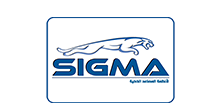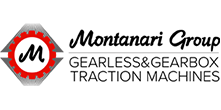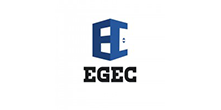
Login or create an account
CloseReturning Customer
I am a returning customer
Login or create an account
CloseRegister Account
If you already have an account with us, please login at the login form.
Your Account Has Been Created!
Thank you for registering with Egyptlifts!
You will be notified by e-mail once your account has been activated by the store owner.
If you have ANY questions about the operation of this online shop, please contact the store owner.
Account Logout
You have been logged off your account. It is now safe to leave the computer.
Your shopping cart has been saved, the items inside it will be restored whenever you log back into your account.
Elevator-Elevators-Elevator-Elevators-For Elevators-Elevator-Elevator-Elevator-Lift-Secure-Elevator-Elevator-Elevator-Elevator-Elevator-Helmeyet El-Zeitoun-Sensor
The elevator is one of the technological innovations that has greatly improved our daily lives and facilitated movement between floors in tall buildings. It is a staple in many residential, commercial, and hospital buildings, saving users time and effort and ensuring comfort and safety during transportation. Elevators have been in use for centuries and have evolved significantly, becoming more efficient and advanced, thanks to ongoing innovations in engineering and technology. In this article, we will discuss the evolution of elevators and their various types, as well as their benefits and challenges.
Elevators and their importance in daily life and vertical mobility
Facilitating mobility: Elevators help people move easily between floors, especially in tall buildings, saving time and effort.
Comfort for the elderly and people with special needs: They allow them to move effortlessly, enhancing their independence and facilitating their daily lives.
Increased work efficiency: In offices and hospitals, elevators contribute to improved productivity by reducing travel time between floors.
Reduced accidents and physical stress: They reduce the risks of staircases, especially when transporting heavy objects or in emergency situations.
Supporting modern building design: They have become an essential element in urban and building planning, allowing for increased floors without obstructions.
Providing a safe and comfortable experience: Thanks to technological advancements, elevators have become safer and more comfortable for users.
Elevator basic components and how do they work?
Cabin: The part that carries passengers or cargo. They are designed in different sizes and materials depending on the use.
Doors: These include cabin doors and floor doors, and operate automatically to ensure safety during movement.
Motor: Responsible for operating the elevator. There are electro-hydraulic and hydraulic types.
Steel cables and pulleys: Used in electric elevators to raise and lower the cabin safely.
Control system: Determines the elevator's movement, direction, and speed based on user requests.
Brake assembly: Automatically operates to prevent the cabin from collapsing in an emergency.
Safety System: Includes sensors to prevent doors from closing on passengers and an emergency stop system for protection.
How Does It Work?
When the button for the desired floor is pressed, the control system sends a signal to the motor, which drives the pulleys and wires to raise or lower the cabin smoothly and safely, ensuring a precise stop at the desired floor.
Electric Elevators, Their Types, and Different Uses
Electric Elevator: The most common, powered by an electric motor and steel cables, is used in residential and commercial buildings.
Hydraulic Elevator: Relies on oil pressure to raise the cabin and is used in mid-rise buildings and warehouses.
Freight Elevator: Designed to transport heavy loads such as equipment and materials, and is used in factories and warehouses.
Hospital Elevator: Larger in size to accommodate beds and medical equipment, and is used in hospitals and health centers.
Panorama Elevator (Glass): A transparent, aesthetically pleasing design, used in hotels and shopping centers to enhance the visual experience.
Car Elevator: Designed to transport cars between floors and is used in multi-story parking lots.
Service Elevators: Small in size, used in restaurants and hotels to quickly transport food and supplies.
Each type of elevator is designed to suit specific needs, contributing to improved efficiency and ease of movement in various environments.
Hydraulic vs. Electric Elevator: Which is Better?
Mechanism of Operation:
Hydraulic: Relies on oil pressure inside a cylinder to propel the cabin upward.
Electric: Operated by an electric motor and steel cables to raise and lower the cabin.
Uses:
Hydraulic: Suitable for medium-rise buildings and warehouses.
Electric: Ideal for high-rise buildings and commercial offices.
Speed and Efficiency:
Hydraulic: Slower than electric, but can handle heavier loads.
Electric: Faster and more efficient for moving between high floors.
Maintenance and Cost:
Hydraulic: Requires periodic maintenance due to oil leakage, but is less expensive to install.
Electric: Requires complex electrical maintenance, and installation costs are higher.
The best choice depends on the building's needs, with electric elevators ideal for high-rise buildings, while hydraulic elevators are suitable for low- and medium-rise buildings.
Elevator Safety Standards and How to Ensure Safety
Emergency Brake System: Automatically operates in the event of a malfunction, preventing the cabin from falling and securing passengers.
Door Sensors: Prevent doors from closing if there is an obstruction, reducing injury incidents.
Emergency Stop System: Allows passengers to manually stop the elevator in an emergency, providing increased safety.
Backup Power Supply: Ensures the elevator continues to operate in the event of a power outage to avoid stranding passengers.
Intercom System: Allows communication with the maintenance or emergency team in the event of a problem.
Routine Maintenance: It is essential to inspect the motor, wiring, and brakes to ensure safe operation.
Permissible Load: The maximum weight must be adhered to to avoid overloading the system.
Following these standards makes elevator use safer, reducing risks and ensuring a safe travel experience for everyone.
Elevator Safety Standards and How to Ensure Safety
Emergency Brake System: Automatically activates in the event of a malfunction, preventing the cabin from falling and securing passengers.
Door Sensors: Prevent doors from closing if there is an obstruction, reducing injury incidents.
Emergency Stop System: Allows passengers to manually stop an elevator in an emergency, providing increased safety.
Backup Power Supply: Ensures the elevator continues to operate in the event of a power outage to avoid stranding passengers.
Intercom System
There are no products to list in this category.

















